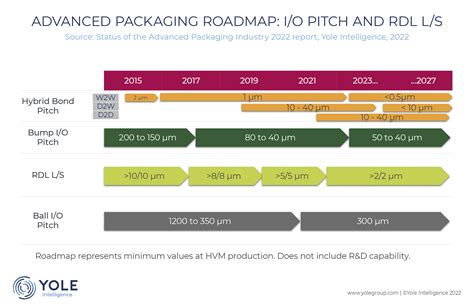How to strategically break strength plateaus and consistently build lean muscle?

Hitting a strength plateau can be one of the most frustrating experiences in your fitness journey. You’re putting in the work, but the numbers on the bar aren’t moving, and your physique seems stagnant. This isn’t a sign of failure; it’s an indication that your body has adapted, and it’s time to introduce new stimuli. Breaking through these barriers strategically is key not only to continued strength gains but also to consistent lean muscle accretion.
Breaking the Barricade: Why Plateaus Occur
Strength plateaus are a natural part of training. Your body is incredibly efficient at adapting to stress. When you consistently perform the same exercises with the same load, volume, and intensity, your muscles, nervous system, and energy systems become highly efficient at that specific task. This adaptation, while initially good, eventually leads to diminishing returns. Factors like insufficient recovery, poor nutrition, mental fatigue, and an inability to apply progressive overload effectively also contribute significantly.

Mastering Progressive Overload Beyond Just Weight
Progressive overload is the fundamental principle of muscle growth and strength gain, but it’s often misunderstood as simply adding more weight. While increasing load is vital, it’s not the only method. To break a plateau, you must manipulate other variables:
- Increase Reps or Sets: If you can’t add weight, try performing more repetitions with the current weight, or add another set.
- Improve Time Under Tension (TUT): Slow down your repetitions, especially the eccentric (lowering) phase, to increase the time your muscles are working.
- Decrease Rest Periods: Shorter rest intervals between sets can increase training density and metabolic stress, challenging your muscles differently.
- Improve Form and Range of Motion: Performing an exercise with perfect form through a full range of motion can make a lighter weight feel heavier and more effective.
- Increase Frequency: Training a muscle group more often, assuming adequate recovery, can provide more opportunities for stimulation.
Implementing Periodization and Strategic Deloads
Periodization involves structuring your training into different phases, each with a specific focus (e.g., strength, hypertrophy, endurance). This prevents adaptation by constantly changing the stimulus and allows for planned recovery. For example, you might spend 4-6 weeks focusing on heavy, low-rep training, followed by 4-6 weeks of moderate weight, higher-rep work.
Strategic deloads are equally crucial. A deload week involves significantly reducing your training volume and/or intensity (e.g., 50-60% of your usual work) for 5-7 days. This allows your central nervous system to recover, repairs accumulated micro-damage, and reduces mental fatigue, preparing you for a stronger return to heavier training. Many plateaus are simply a result of accumulated fatigue that a deload can effectively resolve.

Advanced Training Techniques to Stimulate Growth
Once you’ve mastered the basics, incorporating advanced techniques can provide the novel stimulus needed to shock your muscles into new growth:
- Drop Sets: After reaching failure with a certain weight, immediately drop the weight and continue performing reps until failure again. Repeat 1-2 times.
- Supersets/Giant Sets: Performing two or more exercises back-to-back with no rest in between.
- Rest-Pause Training: Perform a set to near failure, rest for a short period (10-20 seconds), then perform a few more reps with the same weight.
- Partial Reps: After full range of motion reps to failure, continue with partial reps in the strongest range of the movement.
- Cluster Sets: Breaking a set into smaller mini-sets with short rests in between, allowing you to lift heavier for more total reps.

Fueling Your Gains: Nutrition and Recovery Essentials
No amount of strategic training will yield results without adequate support from your diet and recovery protocols. To build lean muscle, you generally need to be in a slight caloric surplus, ensuring sufficient energy for muscle repair and growth. Protein intake is paramount, aiming for 1.6-2.2 grams per kilogram of body weight to support muscle protein synthesis. Don’t neglect healthy fats and complex carbohydrates, which provide energy and support hormone production.
Recovery extends beyond food. Aim for 7-9 hours of quality sleep per night, as this is when the majority of muscle repair and growth occurs. Manage stress levels, as chronic stress can elevate cortisol, a hormone that can break down muscle tissue. Hydration is also critical for performance and recovery, so drink plenty of water throughout the day.

Consistency and Patience: The Ultimate Growth Factors
Breaking plateaus and building lean muscle are not overnight processes. They require unwavering consistency in your training, nutrition, and recovery. Track your workouts meticulously to ensure you’re applying progressive overload and to identify what strategies are working. Listen to your body, adapting your plan as needed. There will be good days and bad days, but showing up and sticking to your plan, even when it’s tough, is what ultimately leads to long-term success.

Conclusion
Strength plateaus are roadblocks, not dead ends. By understanding the causes and strategically implementing a diversified approach to progressive overload, periodization, deloads, advanced training techniques, and meticulous attention to nutrition and recovery, you can consistently break through barriers and build the lean muscle you desire. Remember, the journey is a marathon, not a sprint; patience and intelligent effort will be your greatest allies.







